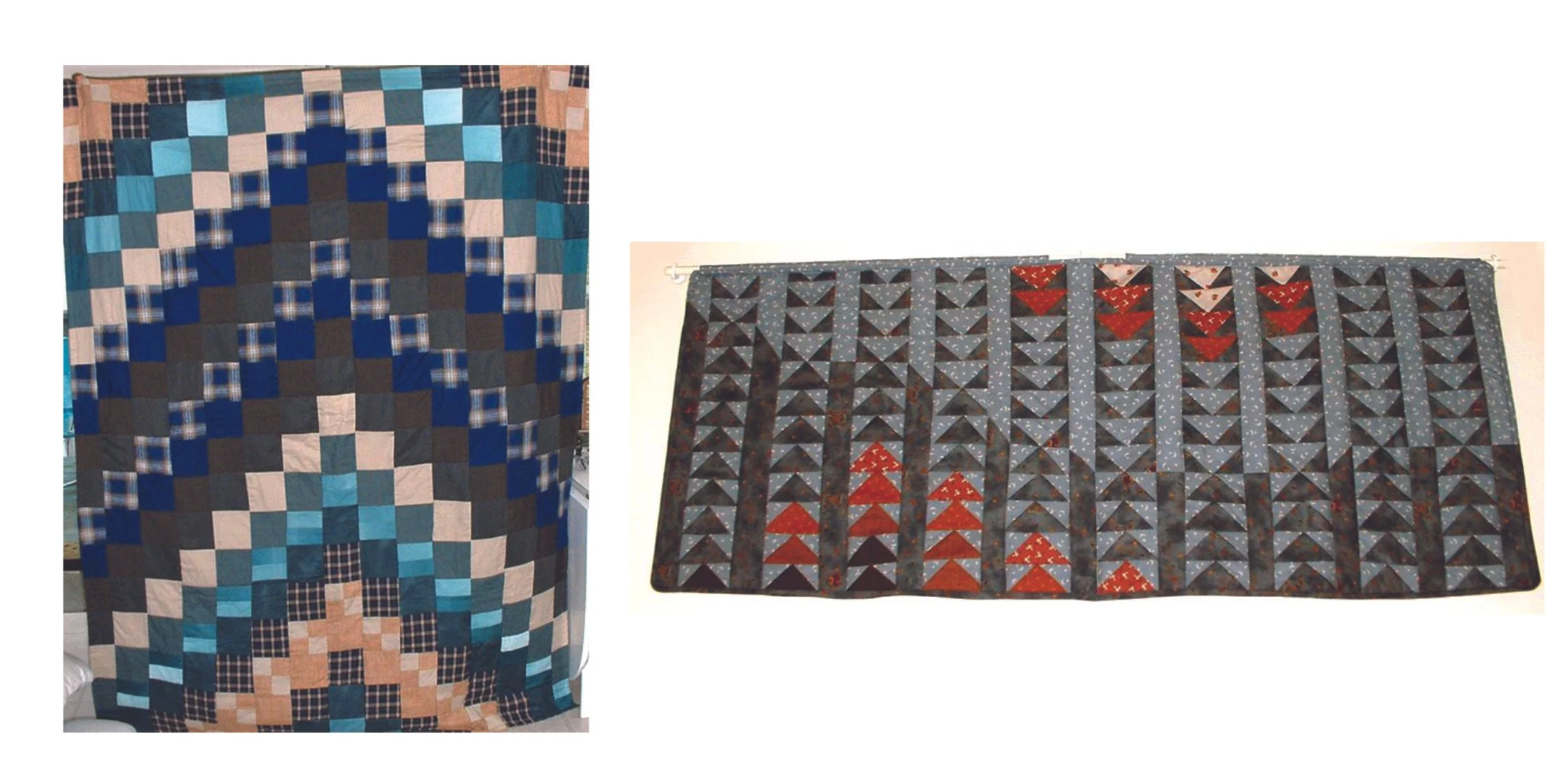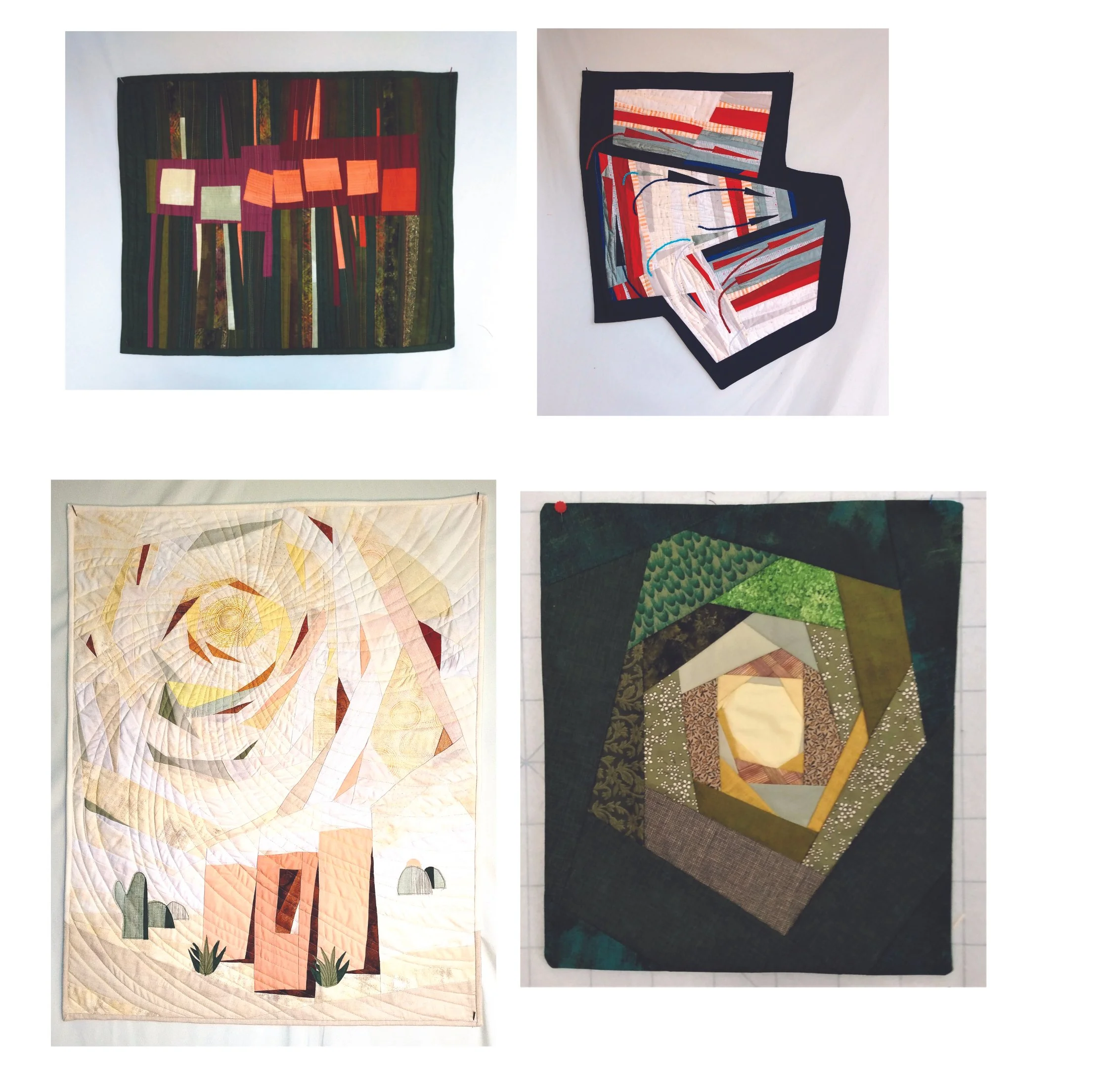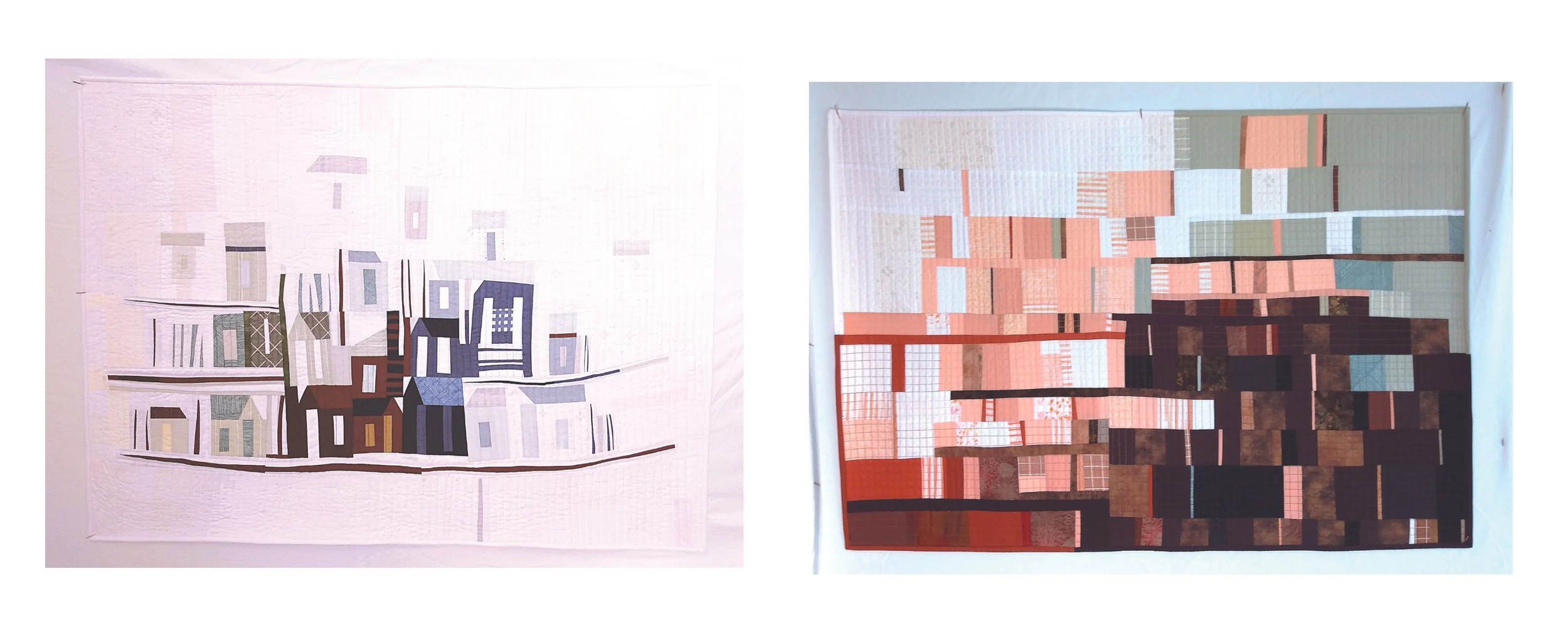Style: Wild or Disciplined?
I usually work improvisationally. I did so when I sewed my own clothes, making alterations on the fly, pinning, adjusting, a little stretching, a little trimming, as I imagine a tailor would do.
Shattered Jungle: an improvisational piece made as a challenge from random scraps provided by my guild.
When I began quilting over 20 years ago, I felt right at home, cutting and sewing, taking in seams, trimming where needed. I began to realize most of these quilters were obsessed with precision. Quarter inch seams? Ridiculous! Scant quarter inch seams? Whaaat? Using a high-powered microscope to adjust a needle over one thread? Nope, nope, nope. Never in a million years! My quilts ended up whatever size I felt like, and most points didn't have a remote chance of matching up.
Early quits, made with little regard for matching points, 1/4” seams, or binding (which I didn’t yet know how to do).
So I cut and sewed cheerfully, eventually deciding to pay a little more attention to sizing and seams, but always leaving one edge or corner for slop - that is, stuff left over that I'd have to trim later. I'm just not a precision piecer, and never will be. The fiddley stuff takes all the fun out of it. Fabric is flexible; a little tug here, a snip there ... I can make it fit.
I'm an engineer, so I understand the need for the proper tools and adhering to rules and following instructions to achieve a precise result. But I sew to get away from that side of my personality, to create, not to be imprisoned by boring instructions.
That said, as the years go by and I try new techniques, I have accumulated a roomful of very useful stuff, like rulers and a wool pressing mat, starch of various types, glue, circle templates, Steam-a-Seam and fusibles, foam and Soft and Stable, basting spray, forked pins, scissors and rotary cutters of many kinds. But I still have only one trusty domestic machine and a standard ironing board with a basic iron. My favorite tools are apps for drawing block-based designs and art quilts, producing patterns.
Cutting, pressing, quilting tools and lots, lots, lots of rulers, ranging from 4” to 16”, for cutting square, triangles, circles.
Software used for quilt design: EQ on the left, used to generate block-based designs, and Affinity on the right, for art quilts.
Yes, I know some people are obsessed with starching until the fabric is like cardboard, using a protractor to measure the proper angle to apply their rotary cutters, using seam guides to hew perfectly to that scant quarter inch, using wool pressing mats and clappers so that every seam has reached absolute zero-degree flatness with no stray threads marring the perfection. And if there are any stray threads, they must be conquered with starching or sergers or glue or Fray Check or zigzagging or heat sealing. Fine. I understand many makers feel great satisfaction over these tactics. I'll never be that person.
Samples of quilts that required precision piecing, especially curves. See, I can do it if I have to. Once in a while I get a little thrill creating a geometrically perfect join.
Now, I'll admit to a smug pride when my curved seams match exactly, or I pick up a ruler to trim a block and voilà - it's already perfect. But my greatest joy is cranking up the tunes and, surrounded by heaps of scraps, I just start sewing them together, waiting for the surprise when the design reveals itself.
Some of my improv pieces: Day Lilies, Water Sprites, Warmth, GrellOh!, My Village, and Attraction At A Distance.







